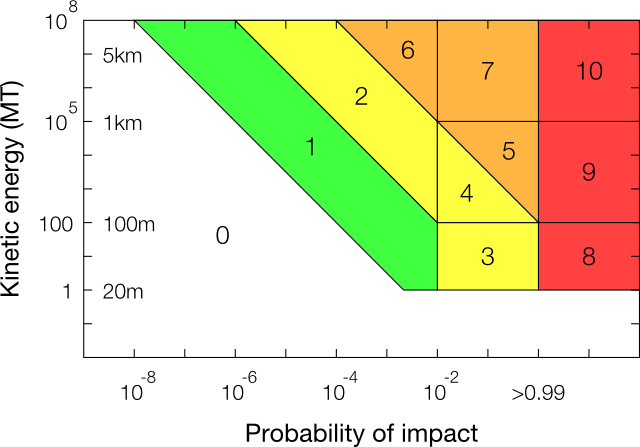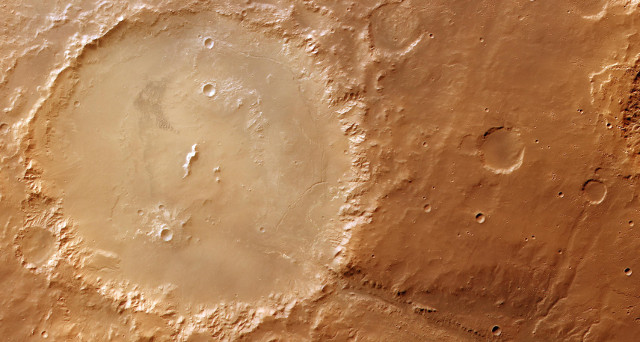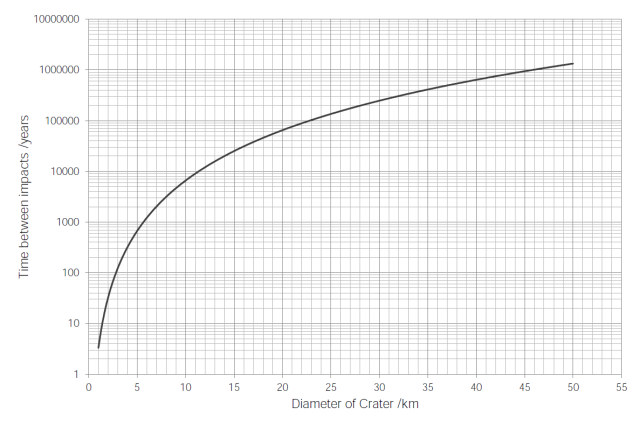The Torino Scale is a system for categorising the risk presented by near earth objects (NEOs) such as asteroids and comets. On the Torino Scale NEOs are rated on a scale from zero to ten, based on a combination of the probability of an object striking earth and the kinetic energy of that object.
Because orbits are unstable and can change the scale only applies to potential objects less than one hundred years in the future. The diagram below shows the different Torino Scale categories, with a logarithmic scale on both axes and an approximate indication of the diameter of the asteroid on the kinetic energy axis.

The Torino Scale is separated into five categories:
- White (Torino Scale 0) – No hazard; “the likelihood of a collision is zero, or is so low as to be effectively zero”.
- Green (Torino Scale 1) – Normal; “a routine discovery in which a pass near the Earth is predicted that poses no unusual level of danger … new telescopic observations very likely will lead to re-assignment to Level 0”.
- Yellow (Torino Scale 2-4) – Meriting attention by astronomers; “current calculations give a 1% or greater chance of collision capable of localised [Level 3] or regional [Level 4] destruction”.
- Orange (Torino Scale 5-7) – Threatening; at its most extreme “a very close encounter by a large object, which if occurring this century, poses an unprecedented but still uncertain threat of a global catastrophe”.
- Red (Torino Scale 8-10) – Certain collision; “a collision is certain, capable of causing localized destruction [Level 8] … unprecedented regional devastation for a land impact or the threat of a major tsunami for an ocean impact [Level 9] … or capable of causing global climatic catastrophe that may threaten the future of civilisation as we know it, whether impacting land or ocean [Level 10]”.
As new data about an NEO becomes available the Torino Scale rating for an object can jump suddenly: the Chelyabinsk meteor had a kinetic energy of 0.4 megatons TNT equivalent, giving it a Torino Scale rating of zero, but had it been only a little bit more massive or slightly faster (one megaton) it would have suddenly jumped to an eight.
Currently NASA’s Jet Propulsion Lab’s Sentry system lists only one NEO with a non-zero Torino Scale rating. 2007 VK 184 has a Torino Scale rating of one, but the earliest possible collision date is in June 2048, so we don’t have to start worrying just yet.

